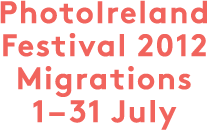The Great Human Diasporas: The History Of Diversity And Evolution
ploads/2012/04/1965462.jpg” alt=”The book cover- a photo of people playing on a waterfall” width=”304″ height=”475″ />
By Luigi Luca Cavalli-Sforza and Francesco Cavalli-Sforza.
300 pp. Reading, Mass., Addison–Wesley, 1995.
Luigi Luca Cavalli-Sforza draws upon his lifelong work in archaeology, anthropology, genetics, molecular biology, and linguistics, to address the basic questions of human origins and diversity. Coauthored by his son, Francesco, the book answers age-old questions such as: Was there a mitochondrial Eve? Did the first humans originate in Africa or in several spots on the planet at about the same time? How did humans get onto North America, the tip of South America, and Australia? Can the history of humankind be reconstructed on the basis of today’s genetic situation?
Cavalli-Sforza presents in a single volume for the non-specialist the fruits of over forty years of research. After providing a thorough grounding in evolutionary theory, Cavalli-Sforza takes readers back to the heady times of 1961-62 when he and a few colleagues were able to bring together genetic data on blood groups for fifteen populations spread out on five continents. By computing the genetic distance between pairs of populations, these scientists were able to develop an evolutionary tree that looks surprisingly like the ones reconstructed today, even with fifteen times more information. Using this crude tree, scientists could trace the approximate routes modern humans took in colonizing the earth 100,000 years ago and discover when populations split off from each other to form new groups. In the course of his work, Cavalli-Sforza joined forces with archaeologists, linguists, anthropologists, and molecular biologists. He shows how both archaeological and genetic data were used to track human migrations during the spread of agriculture; he probes such topics as the existence of a single ancestral language and the relationship between biological and linguistic evolution;and he brings us up to date with his current work as chief sponsor of the human genome diversity project, an ambitious attempt to analyze the most significant individual variations in human genomes.
Luigi Luca Cavalli-Sforza is Professor of Genetics Emeritus at Stanford University Medical School. He is the author of a number of seminal scientific books. Francesco Cavalli-Sforza is a creator and producer of educational films, based primarily in Italy.







